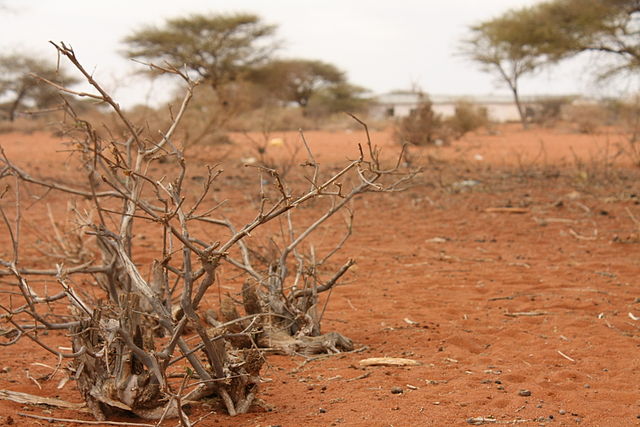
Can we all agree that we’ve had enough of the heat and the drought? This has been a trying summer for gardeners and now that towns are limiting or banning outdoor gardening, it may be time to give up the ghost and start planning for next year’s garden. Fortunately, we’ve had some fun diversions to take our minds off all the brown and withered plants in our gardens.
Jill C. and Jan C. hosted a very fun “Mad Hatter Tea Party”, bringing members together to display some heat-induced silliness. The party featured costumes, finger sandwiches, tea and punch, pretty floral centerpieces, a quiz, and many laughs – all in the air-conditioned comfort of Jill’s home. (Thanks go to Jill’s husband, Bill, who labored in the heat to set up a croquet court, which went unused on that 90+ degree day.)
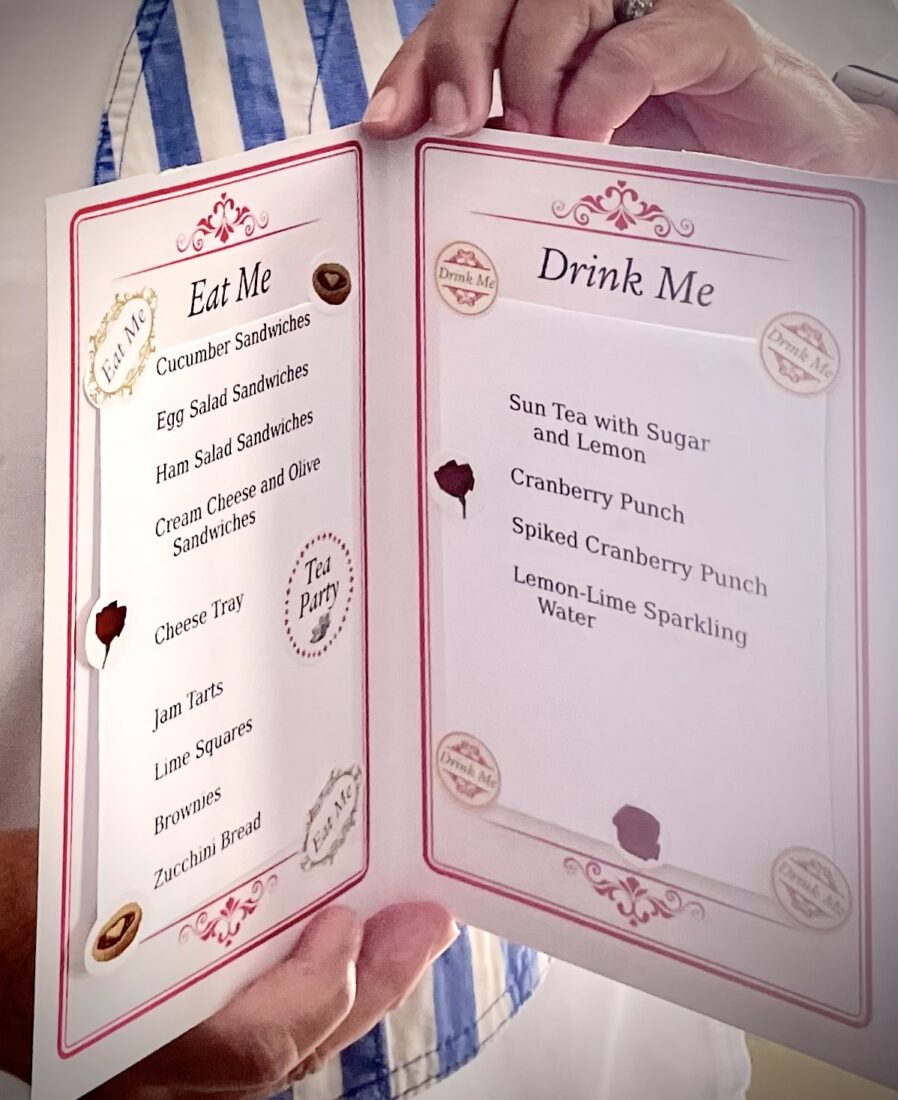
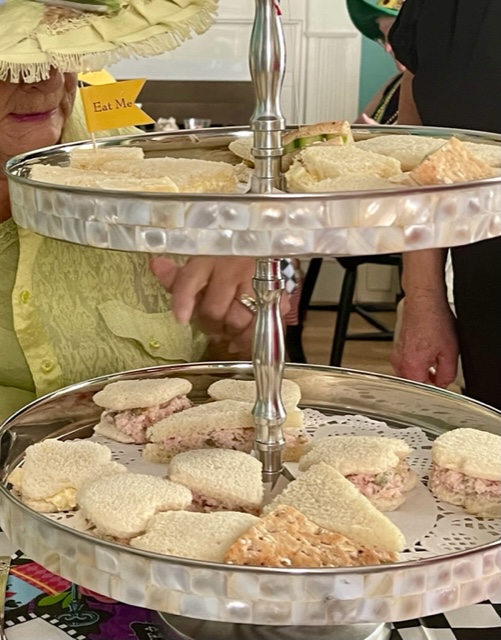
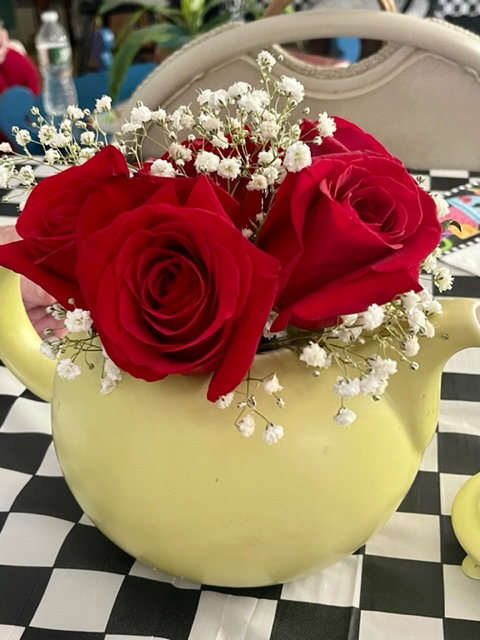
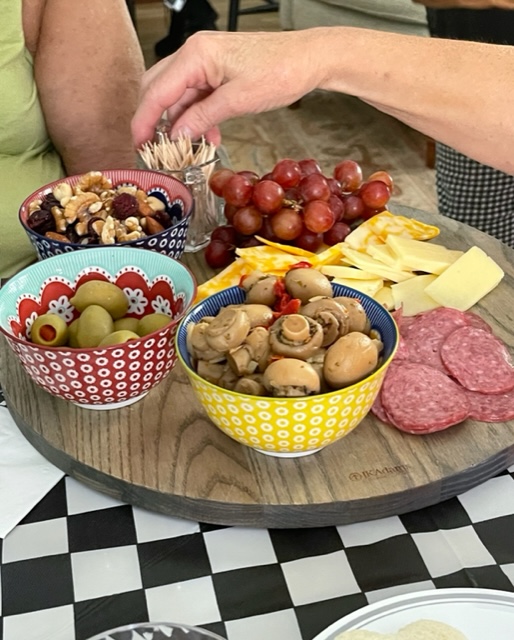




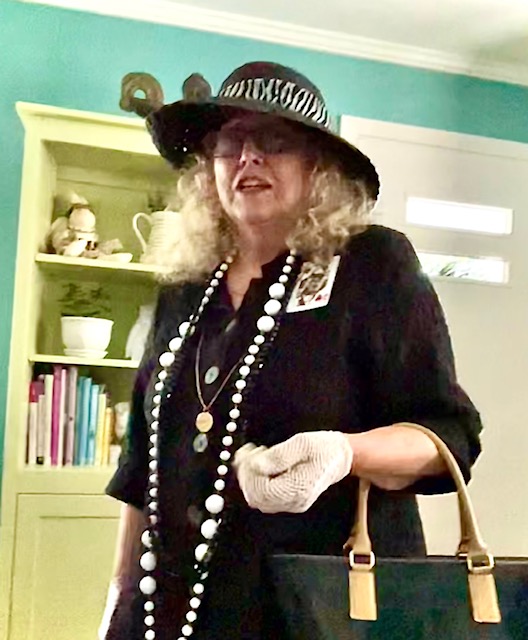
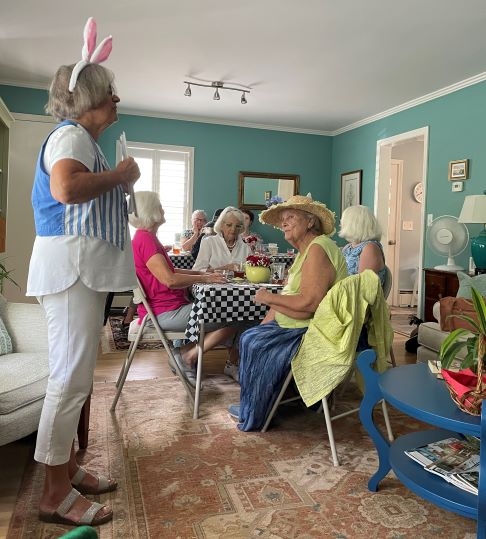

This week, Lee C. very generously shared her wonderful lake house in Wakefield, NH with garden club members. Lee, her husband Doug, and her son (and super-baker) Ben pulled out all the stops in providing us with a relaxing mini-vacation in a lovely wooded setting.
Later in the day, we were treated to a pontoon boat tour of Pine River Pond, with Captain Doug at the helm. One of the highlights of the cruise was the sighting of two eagles.
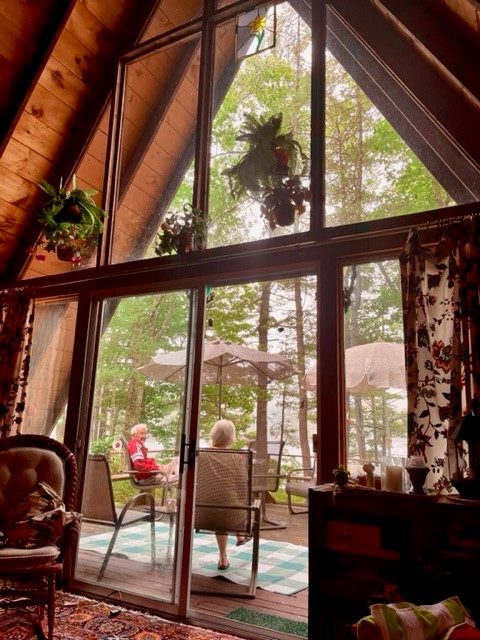
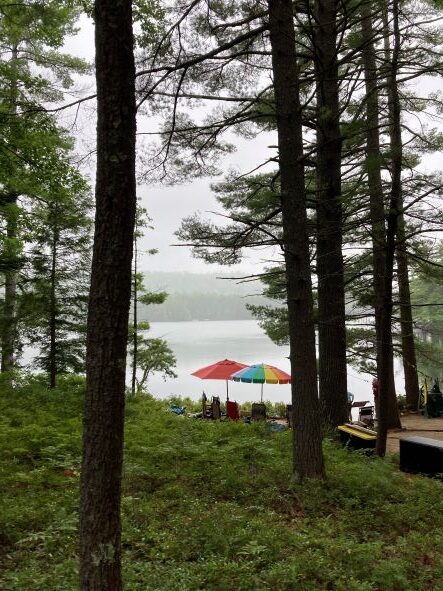
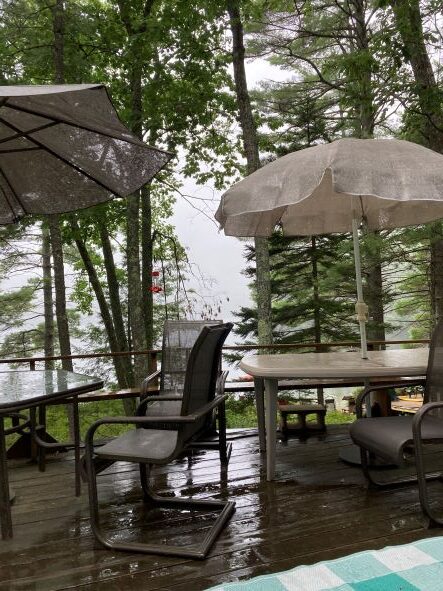
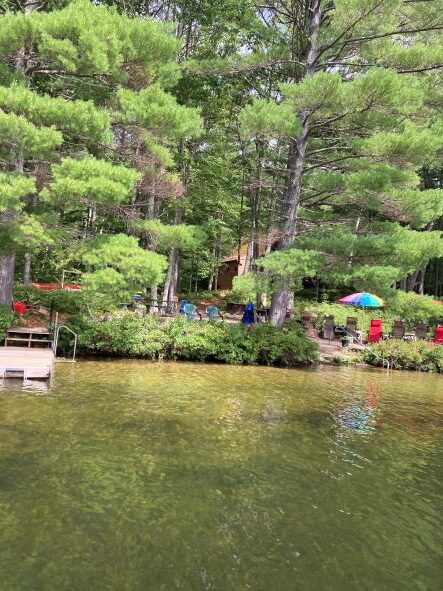
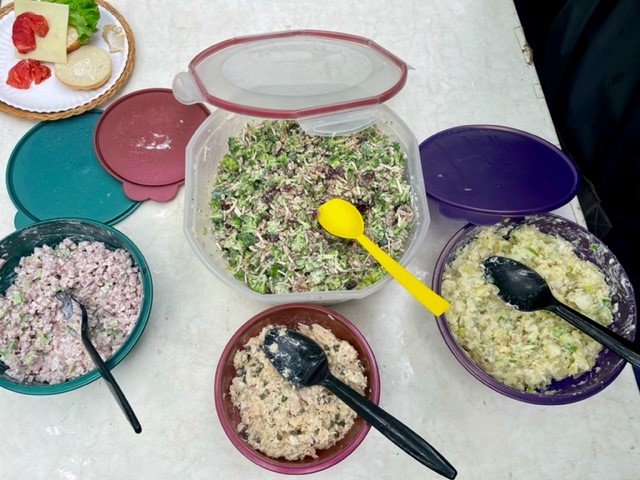

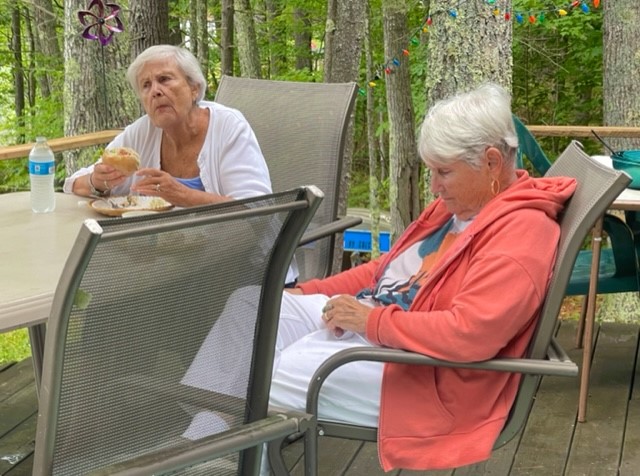
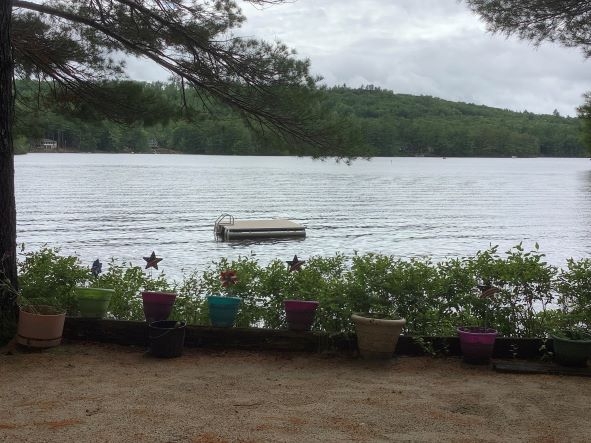



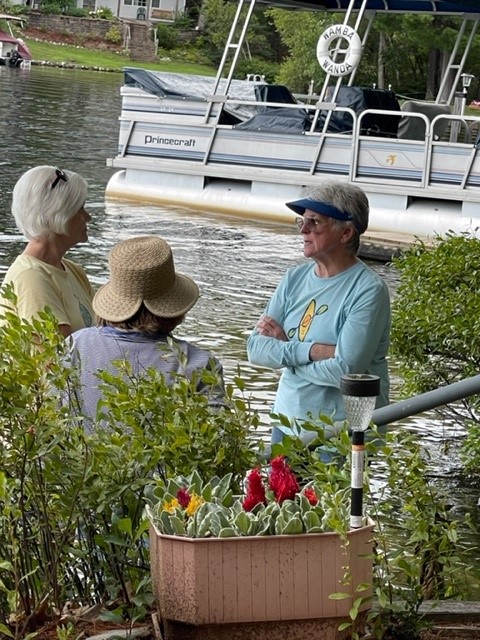



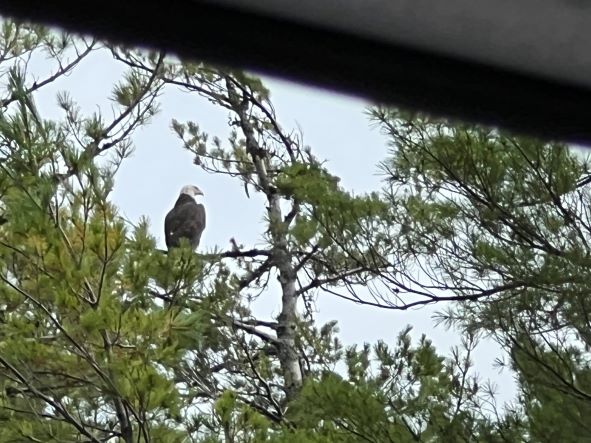



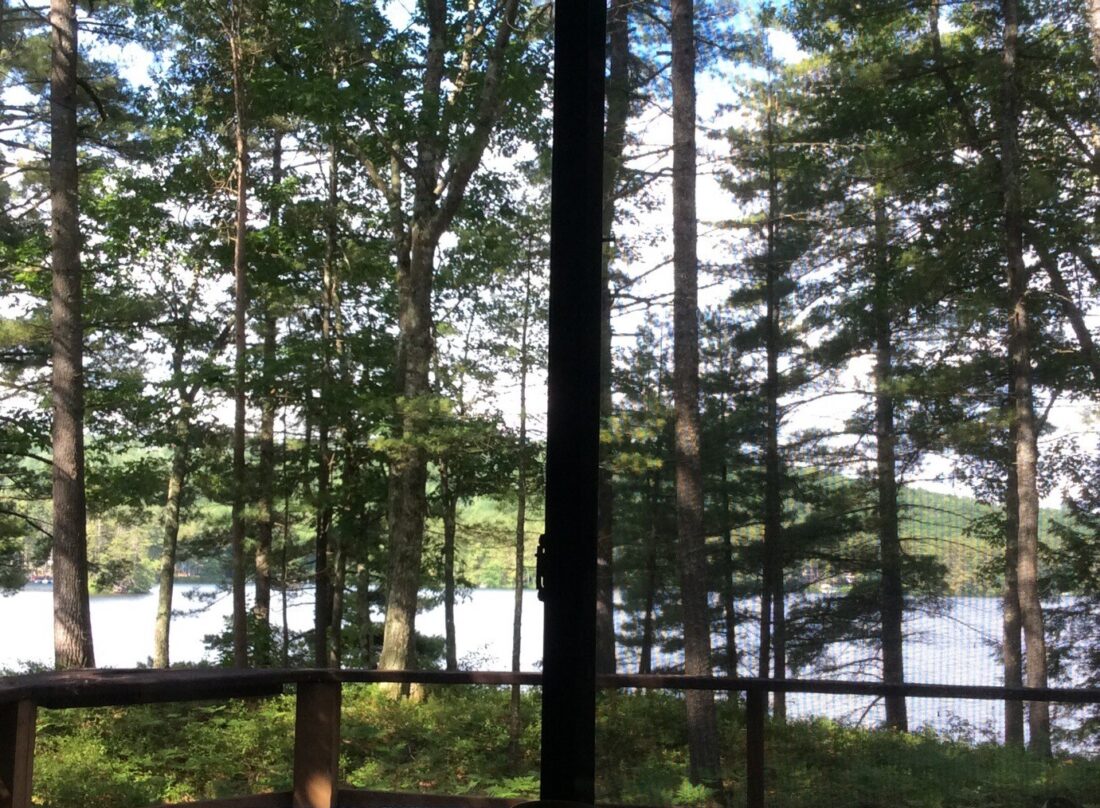
For those of you who’ve noticed our garden club’s absence at the Exeter Bandstand, you can now see our sign and our gardening efforts at the Exeter American Independence Museum. Members have been weeding and watering (until Exeter recently banned outdoor watering) and the beds look good. Next year, with some growth, they’ll be even better!


What happens when gardeners take a day off from gardening to gather for some relaxation? They talk about gardening, of course. At Lee’s lake house, a discussion about a particular weed came up – a weed none of us could positively name but were certainly familiar with.
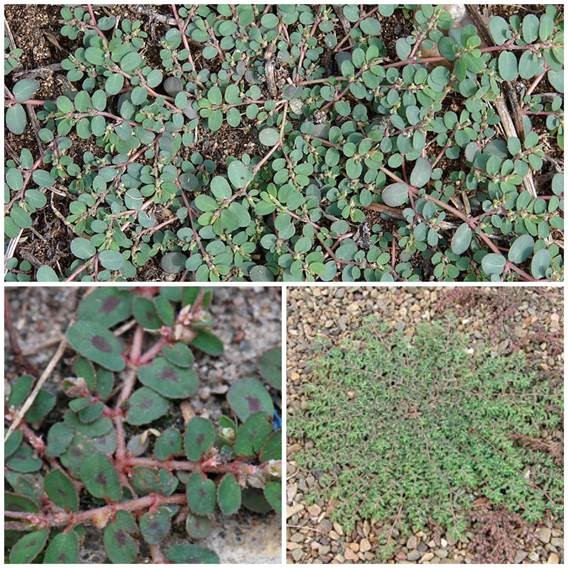
Lee did some research for us and found some facts that should be useful to all of us. This familiar weed is Spotted Spurge. According to Gateway Garlic Farm, “spotted spurge is undesirable, tenacious and mildly poisonous. Its sap is a skin irritant and it’s been known to attract many garden insect pests. It produces a milky white sap that’s not only an irritant but is considered carcinogenic.
Often found growing in garden beds, lawns, and even sidewalk cracks, it’s extremely drought resistant and would make an awesome groundcover if it didn’t adversely affect nerby plants by causing them to grow diminished fruit. It is sometimes confused with purslane but can easily be distinguished by its milky white sap.” It’s also important to note that one spurge plant produces thousands of seeds, as evidenced by these photos taken by Patti E.

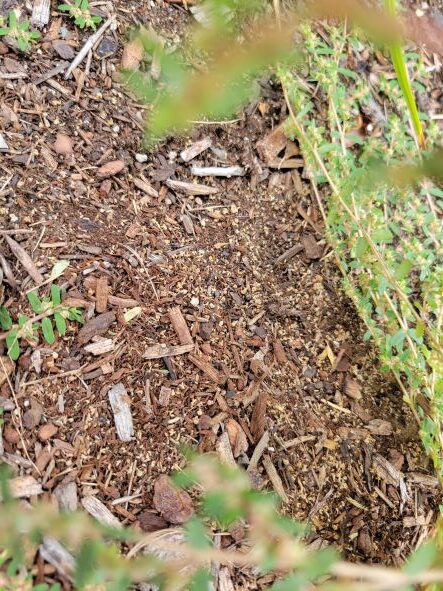
Hot and dry weather obviously haven’t affected Vicki B.’s gorgeous daylily bed. She started this bed three years ago this fall. “I started Daylily fascination at the 2004 July sale at Pinhill Farms Garden in Harvard MA.,” Vicki says. “Mr. Lefkovitz was a daylily hybridizer and his wife kept the logs, organized the summer sale, and coordinated the September digs. From 2004-2007, I purchased 16 different plants, with 4 being created at Pinhill Farms. I accumulated another 15 from various places. I have some favorites that appear in several places for over 55 daylily plants at my home. It is too many. Fun story, my Hyperium was from a neighbor that got hers from the head gardener at the Emily Dickinson estate in Western MA. My double orange Fulva (street daylily) is from my grandmother’s garden in the 1930’s and must be isolated from the hybrids.” The colors are stunning:

This little white spider was photographed by Linda S. at the Independence Museum.
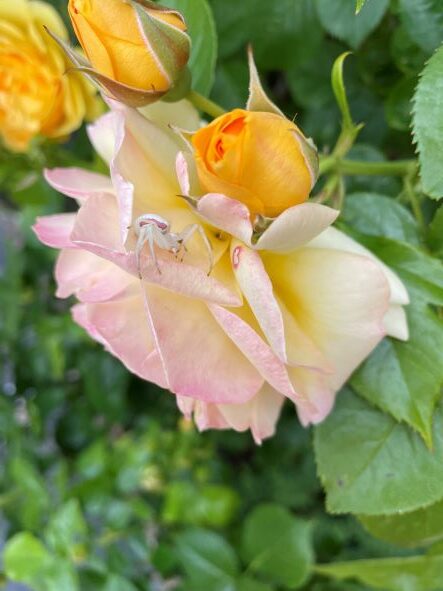
Thanks to our Happenings photographers, Ann H., Linda S., and Patti S.
